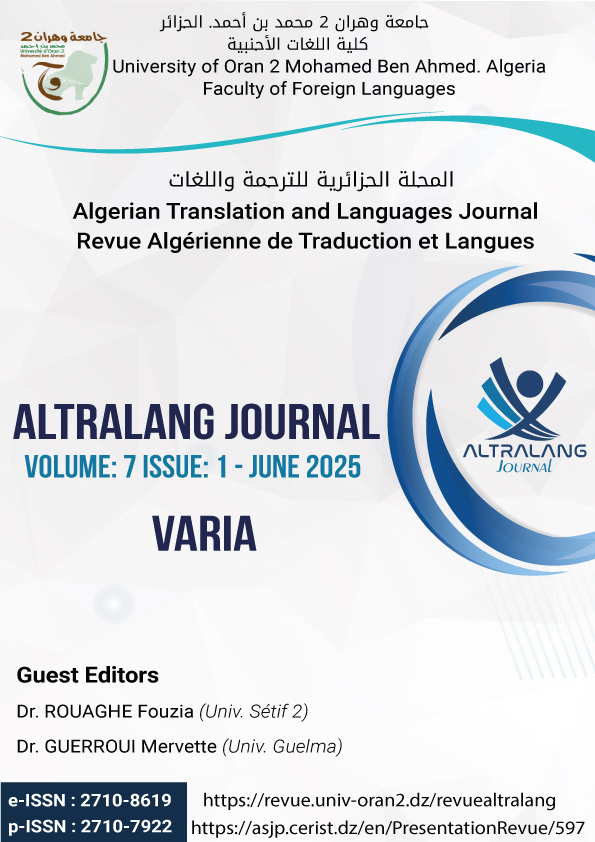The Stakes of Maintaining Distance Learning in the Algerian Academic Institutions in the Post-Covid Era
Main Article Content
Abstract
Distance learning allows students to pursue a degree without having to be physically present in any institution of formal education. It became, at some point, when lockdowns were imposed, an ultimate solution to a new reality that struck the world. This solution seemed temporary as it was appropriate in the context of the Covid era, and the reasons of opting for it were indisputable. However, as now things have returned to what they used to be, distance learning should not be prioritized and promoted in the way it did during the restrictions of the movement. Therefore, this paper aims at highlighting the degradation that this mode of teaching has caused, through the reading of the specialists of the field and their findings on distance learning. Moreover, this article offers a general overview of the academic situation in the context of distance learning in Algeria.
Article Details

This work is licensed under a Creative Commons Attribution 4.0 International License.
LICENSE: This work is licensed under a Creative Commons CC BY 4.0 license
References
• Christensen, E. W., Anakwe, U. P. & Kessler E. H. (2001) Receptivity to distance learning: the effect of technology, reputation, constraints, and learning preferences. Journal of Research on Computing in Education, 33 (3), 263 – 279.
• Clark, R. E., & Salomon, G. (1986).Media in teaching. In M. C. Wittrock (Ed), Handbook of research on teaching (3rd ed.)(pp. 464–478). New York: McMillan.
• Daif Allah, n., & Battouche, k. (2016, june 16). features of elearning in higher education institutions. annuals of the university of guelma for scocial and human sciences , pp. 425-452.
• Dede, C. (1995, July). The transformation of distance education to distributed learning. InTRO (http://129.7.160.78/InTRO.html).
• Dunbar, N. E., & Selby, K. M. (November 1996). Effects of gender and previous experience on students' perceptions of video-teleconferencing. Paper presented at the Speech Communication Association Annual Convention (Instructional Development Division), San Diego, CA.
• Franklin Rosenthal, R., Rosnow, R. L., & Rubin, D. B. (2000). Contrasts and effect sizes in behavioral research: A correlational approach. Cambridge University Press.
• Freitas, F. A., Myers, S. A., & Avtgis, T. A. (1998).Student perceptions of instructor immediacy in conventional and distributed learning classrooms. Communication Education, 47 (4), 366–372.
• Jones-Delcorde, D.H. (1995). Distance education: Promoting a continuous learning culture. The Canadian Manager, 20(1), 27-28.
• Niederhauser, D. S. & Stoddart, T. (2001) Teachers’ instructional perspectives and use of technological software, Teaching and Teacher Education, 17, p 15 – 31.
• Ruth Guzly, Susan Avanzino, Aaron Bor Simulated Computer-Mediated/Video-Interactive Distance Learning: A Test of Motivation, Interaction Satisfaction, Delivery, Learning & Perceived Effectiveness, JOURNAL OF COMPUTER-MEDIATED COMMUNICATION, June 2006.
• Zhang, P. (1998). A case study on technology use in distance learning.Journal of Research on Computing in Education, 30 (4), 398–419.

1.png)